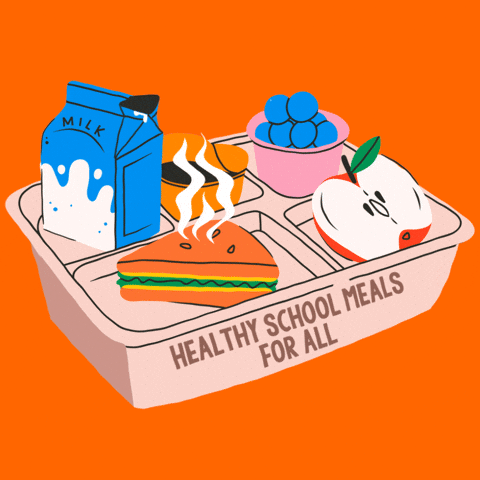Cutting back on eating meat in general, and processed meats in particular. After looking at some of the menus given by schools in the province, nutritionists say that this trend should be followed in school cafeterias.
The national government is keeping an eye on the quality of the food that kids eat at school. Starting next year, schools will have to make sure that kids eat fresh fruits and vegetables every day, offer more fish and legumes, and do rid of sugary drinks.
The Ministry of Education said that they saw this coming, among other things, because school cafeterias already serve at least 40% fresh seasonal fruits and vegetables, 3% organic foods, and items for those with coeliac disease.
The Generalitat says that 3% of the things in schools must be organic
The Official College of Dietitians-Nutritionists of the Valencian Community (CODiNuCoVa) says, however, that quality might still be better, even though more people are aware of how important it is for school-aged children to eat well. In fact, the group of professionals thinks that the new national rules would help make sure that schools follow key requirements that were only suggestions in the law before now.
Nutritionists are looking at ultra-processed foods that are still served in schools, such hamburgers, chicken nuggets, cold cuts, and sausages, to name a few. “It’s true that we see fewer and fewer of these kinds of things, but the best thing would be to see none at all.” The trend of putting meat first on menus isn’t just happening in schools; it’s happening everywhere. Inma Girba, a representative for the College of Dietitians-Nutritionists’ Collective Catering Department, said that people are eating more meat and less fish or beans. The expert says that lentils, salmon, and eggs are significantly better sources of protein for us to eat.
Pasta and rice Yes, but whole grain
Another problem that experts have found with school meals is that they don’t include enough whole grains. This is especially true for rice and pasta, which are two of the foods kids prefer and eat the most outside of school. More and more people are eating whole-grain bread, and it’s becoming a regular part of our menus and those of schools. Girba says that it’s still hard to get people to eat whole-grain pasta and rice, which is important since it’s a method to cut down on processed flours in our diets and focus on whole grains.
Some schools also need to work on getting more fresh, seasonal vegetables into their meals. Nutritionists say that right now, school cafeterias provide salad every day, but the only fresh foods they usually have are lettuce, tomatoes, and maybe a little cucumber. “Most of the time, everything else is canned, like canned beets and canned carrots.” The expert says, “These packaged vegetables often have a lot of salt in them, and they aren’t fresh vegetables. They also don’t offer much variety.”
Salads are served with meals every day, although sometimes they come with canned veggies
Nutritionists also suggest that you eat legumes at least twice a week and mix them up. The professional association says that school menus should only allow them to eat them twice a week right now. Experts say kids are more likely to eat them if they’re served as burgers or bean and hummus croquettes. The nutritionist says, “It’s a good way to replace meat and fish with more vegetables and less animal protein, which, as we said before, is overused in almost all schools.”
Schools will have to serve more veggies and fish
The Generalitat (Catalan government) helps more than 123,000 pupils in the Valencian Community eat in school cafeterias. This is 3,000 more than the previous year, according to the Ministry of Education.
Since 2018, organisations that provide this service to schools have been obligated by law to serve a Mediterranean diet, with 40% of the fruits and vegetables being fresh and 3% of the items being organic. Furthermore, since last year, the regional government has required the cafeteria service to “pay special attention to developing good eating habits in students and must establish varied and balanced menu planning.” In this way, the cafeteria’s yearly program comprises at least 20 menus that are looked over from time to time.
The central government has put new rules in place to enhance food in schools across the country. In response, the Ministry of Education has said that it has already put many of its measures in place in school cafeterias to encourage healthy and sustainable eating. This year, though, it has told schools what they need to do to make any changes that might not be covered by the regional directive.
The Ministry of Social Rights and Consumer Affairs wrote the law that says schools must serve kids five healthy meals a week. It also makes sure that people eat fresh fruits and vegetables every day, along with more fish and legumes, and no sugary drinks. It also bans processed pastries and energy drinks, limits pre-cooked and fried foods, and encourages foods that are grown and raised in a way that is good for the environment and the economy. This royal order is meant to make sure that all kids, no matter how much money their families have, have access to a healthy and varied food.








No Comment! Be the first one.